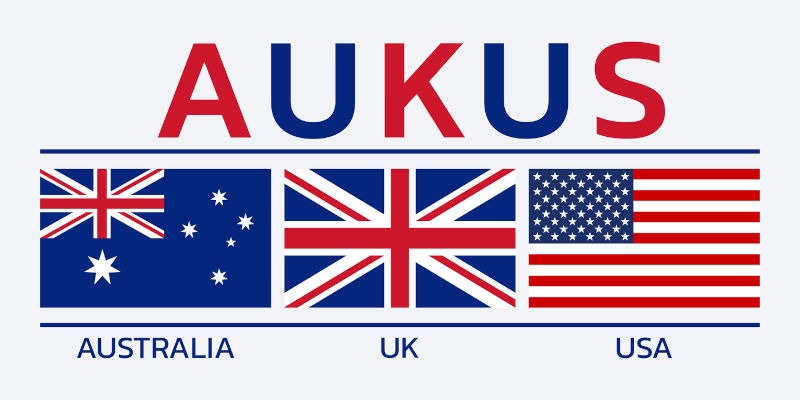New BIS Rule Implementing AUKUS Effectuates Sweeping Changes to Dual Use Export Controls

On April 19, 2024, the U.S. Department of Commerce’s Bureau of Industry and Security (“BIS”) published an interim final rule (“IFR”) that officially codifies certain changes to the Export Administration Regulations (“EAR”) precipitated by the United States’ participation in the Australia, United Kingdom, and United States (“AUKUS”) Trilateral Security Partnership. Announced in September 2021, AUKUS is intended to enhance the overall defense capabilities of each participating government by easing restrictions related to information and technology sharing, fostering “deeper integration of security and defense-related science,” and the coordinated growth of industrial bases and supply chains. While the proverbial centerpiece of AUKUS is the commitment made by the United States to enhance Australia’s deterrence efforts by equipping its government with nuclear submarine technology (“AUKUS Pillar I”), a second core focus of the AUKUS effort is the reformation of the regulatory framework necessary to permit less restrictive trilateral technology and information sharing (“AUKUS Pillar II”).
To that end, the new IFR effectuates sweeping changes to the EAR that place Australia and the UK on equal footing with Canada with respect to licensing requirements for controlled commodities and technology. Among other things, the IFR removes list-based license requirements for exports, re-exports, and transfers (in country) when bound for either Australia or the UK. Specifically, the rule retracts previously extant license requirements for the export of commodities controlled for national security column 1 (“NS1”), regional stability column 1 (“RS1”), and missile technology column 1 (“MT1”) reasons from the EAR, with corresponding changes made to the ubiquitous Commerce Country Chart (Supplement No. 1 to Part 738) for both of the aforementioned jurisdictions. Since “AUKUS partners are among the closest allies of the United States,” and have substantially similar export control and technology protection regimes in place, BIS confidently notes that these changes in particular mitigate any theoretical risk of misuse or diversion of now “license-free” exports. Treatment of Australia and the UK as equal to Canada under the EAR has significant implications for the export, re-export, and transfer (in country) of controlled items, particularly so-called “600 series” items incorporated in the Wassenaar Arrangement Munitions list and a subset of “9×515” commodities utilized in commercial satellite applications. BIS predicts that the elimination of list-based restrictions alone for commodities bound for Australia or the UK will reduce licensing volume by approximately 1,800 applications per year.
Complementing the retraction of list-based export controls for Australia and the UK is the removal of special license requirements for exports of commodities classified under ECCN 0A919—the generic, catch-all ECCN utilized by BIS to refer to foreign-made military commodities incorporating a certain amount of de minimis U.S.-origin, “600 series” content that are not otherwise included on the U.S. Munitions List (“USML”), and thus International Traffic in Arms Regulations (“ITAR”) controlled. As a consequence of this change, ECCN 0A919 items may be re-exported from Australia or the UK without a license, eliminating the prior requirement that such re-exports be made only in connection with a military deployment by a unit of the government of a Country Group A:1 jurisdiction to qualify for NLR status. Similarly, the IFR eliminates certain military end-use and military end-user based licensing requirements for the export, re-export, and transfer (in country) of cameras, systems or related components falling under the aegis of Section 744.9(a)(1)(i) and (iii) of the EAR. As a result, commodities classified under ECCN 6A003.a.3, 6A003.a.4, or 6A003.a.6 that are intended to be utilized by a military end user, as well as commodities controlled under ECCNs 0A504. 6A002, 6A003, 6A993.a or 8A002.d that will be or are intended to be incorporated into a “military commodity” controlled by ECCN 0A919 no longer require a license when exported to Australia or the UK. Finally, the rule revises the EAR’s treatment of significant items (“SI”) such that so-called “hot section technology” often involved in the development, production or overhaul of commercial aircraft engines, components and related systems are no longer strictly controlled. In this vein, BIS has amended the EAR to curtail the control of commodities falling under ECCN 9E003.a.1 through a.6, a.8, .h, .i, and .l when bound for Australia or the UK. As with other key modifications, this change too, allows Australia and the UK to leverage less restrictive export provisions that were previously available only to Canada.
Collectively, BIS’s latest AUKUS Pillar II revisions portend well for those regularly involved in the export of dual use commodities and technology to Australia and the UK. As commercial activity involving the dramatic enhancement of each U.S. ally’s defense capabilities continues to grow, these changes will prove particularly useful to companies on the frontlines of each country’s military industrial base. In a similar vein, the easing of export restrictions related to certain satellite-based components will prove useful to the nascent global commercial satellite industry, which for years has operated under a patchwork of federal regulations that at times subvert the purpose of dual use controls by subjecting even seemingly innocuous (although admittedly more technologically advanced) commercial items to tighter controls. In the wake of these critical changes, all organizations involved in the export and re-export of EAR controlled commodities to Australia and the UK are encouraged to revisit their own trade compliance programs and policies to leverage the efficiencies gained from a change in overall licensing posture.















